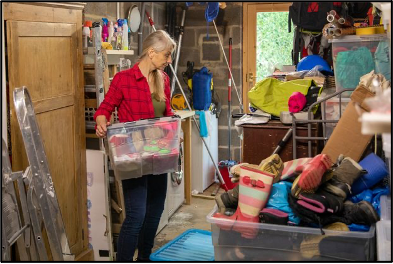February 11, 2021
By Emile Halle
The new world of working from the comfort of home has made employment a touch more tolerable, leading many to stay in their current jobs indefinitely, or accept new offers for part-time or temporary work. And perhaps the biggest motivator to stay employed is that there isn’t much else to do amid a global lockdown that has isolated friends and families for the better part of a year.
“I have had a number of clients postpone retirement due to the pandemic. From their perspective, these are lower stress bonus years. The extra income and savings give them peace of mind, and the work keeps them busy,” said Catherine Gearig, partner at LifePlan Financial Advisory Group, in an email. “They tell me that working from home is significantly less stressful. And, if they did retire, they wouldn’t be able to do much — no travel, limited family get-togethers, etc.”

When the world begins to return to normal and the pandemic subsides, people will likely revisit the idea of retirement, Gearig said.
PRACTICE RUNS
It’s hardly unusual for someone recently retired to go back to work in some capacity. Being financially secure is an important step in retiring, but so too is having regular social connections and a meaningful way to spend one’s time.
Michigan resident Craig Childers, who works in automotive parts sales, came out of retirement for the second time during the pandemic.
“My first retirement was when I turned 65, in 2018,” said Childers, 67, who is Gearig’s client. “I retired, and the summer was great, the fall was great.” He spent much of his time doing what he loves: backpacking, cycling and kayaking. Then winter came. Friends escaped the cold by going to Florida, but that wasn’t for him. Childers was back at work in April 2019, having been retired for 10 months.
“That social aspect of work is really underrated,” he said. “At some point in retirement you’re sick of the to-do list … There’s a little bit of mental pressure to that.”
Some people who were on the fence about retiring have realized that much of what they wanted to be done with was their commute, not necessarily the work itself, said adviser Michael Meehan, vice president at TFC Financial.
One client, a medical doctor in her early 70s, has found an extended career in telemedicine, Meehan said. That has helped her maintain a good income and focus on “doing what she really loves — connecting with patients and helping people, without physically having to be there, risk COVID and deal with office structure,” he said.
In some cases, clients “are going stir-crazy,” said Chris Mellone, an adviser at VLP Financial Advisors. Plans to retire are being put on hold until at least the summer, when people are hopeful that travel will be possible and vaccines will be more widely available, he said. Until then, clients are thinking about what they want “retirement” to look like. For example, does it mean phasing out work, or is it an abrupt cessation?
For those who want a lighter work schedule, the present is a good time to negotiate that, he said. Employers are much more willing to accommodate remote work and consulting arrangements, given the success they’ve seen during the pandemic. “This has almost been like a dry run for a lot of people,” Mellone said.
OPPOSITE EFFECT
Even with remote work capabilities and limited opportunities for travel and leisure, COVID-19 has led some clients to retire early, one adviser said.
“We have some clients who quite frankly, it’s made them think about their own mortality,” Meehan said. “Some younger people like that are starting to think about, ‘How do I get to my number and retire sooner than I had planned to?’”
Business owners are a prime example. In some industries, merger and acquisition activity has been on a tear, making it an opportune time to sell. And potential tax changes on the horizon are prompting deals to move quickly.
A client couple in their early 50s who own a media business is doing just that, Meehan said. “They’ve decided that now is a good time to sell their business. Multiples are high, and valuation was extremely strong,” he said. “They’re using it as an opportunity to almost reboot, and do what they love, focus on something different.”
FINANCIAL CONSIDERATIONS
There is a financial benefit to delaying retirement, particularly during the pandemic, for those who are fortunate enough to work remotely.
“If they can make working from home enjoyable, I think they would delay retirement a little longer if they have the choice,” Scott Hammel, a financial planner at Apeiron Planning, wrote in an email. “Without the ability for these would-be retirees to travel, there’s a ‘wait and see’ approach to working. Certainly, most are saving more than they would have otherwise with traveling and going out less, combined with working longer.”
Of course, many people who work with advisers are more financially secure than those without their services. And the COVID economy has been brutal, with workers of all ages suddenly out of jobs.
In January, the unemployment rate for people 55 and older fell to 5.3%, down from 6% in December and a high of 13.6% in April, according to data released Friday by the U.S. Bureau of Labor Statistics. But many of those who were near traditional retirement age and were laid off last year are struggling to find employment, especially if they worked in industries that were hardest hit by the effects of the pandemic. And for many of those workers, an early, unplanned retirement will necessitate lifestyle changes.
SETTING PRIORITIES
The newfound work flexibility some have found over the past year has led to an “introspective conversation many people have had with themselves … and placing a priority on the things they value most,” wrote Matthew Gaffey, managing partner of Corbett Road Wealth Management, in an email. Even in normal times, recently retired clients go back to work within two years, he said.
“Not always do people take this path because they’re forced to, but many because it gives them a sense of purpose, interaction with others, or they are charitably inclined,” he said.
For Childers, the automotive parts seller, the new retirement date is tentatively in April. Having the extra income has provided a little extra breathing room, in addition to the social benefits of working, he said. “I’m really glad we got a financial planner,” he said. “We’re in good shape. But a little extra money is nice.”








